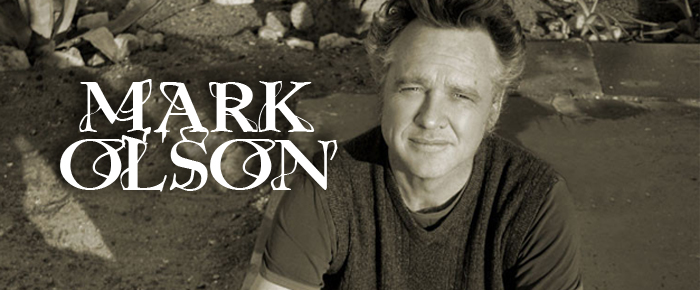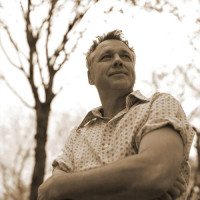
By Eleni P. Austin
Most everybody is familiar with the Lo-Desert sound. From Generator progenitors like Mario Lalli, Zach Huskey, Herb Lineau and Sean Wheeler to mainstream success stories like Kyuss and Queens Of The Stone Age. But not enough attention is paid to the High Desert sound.
Obviously, the Joshua Tree environs have been a safe haven and spiritual mecca for musicians since Gram Parsons and Donovan began proselytizing about the area back in the late ‘60s and early ‘70s. Famously, Keith Richards, John Lennon, Eric Burdon and U2 drew succor from the desolate landscape.
Not so famously, are the High desert denizens who keep music alive in this tiny enclave. Early settlers like Fred Drake and Teddy Quinn provided a cozy place to record when they originally established the Rancho de La Luna Recording Studio. Although Fred passed away, Teddy carries the torch by hosting and curating musical events as well as performing his own amazing music and starting the internet radio station Radio Free Joshua Tree.
Victoria Williams and Mark Olson made Joshua Tree their home in the early ‘90s. She was a well-known singer-songwriter originally from Louisiana, who found a modicum of success in Los Angeles.
After recording two critically acclaimed albums, Victoria was touring with Neil Young and started experiencing some numbness in her hands. She was diagnosed with Multiple Sclerosis. Since most musicians don’t have insurance, the medical bills began piling up.
The musical community rallied round, heavy hitters like Pearl Jam, Lou Reed, Lucinda Williams, Matthew Sweet, Soul Asylum and the Jayhawks recorded an all-star tribute album comprised of Victoria’s vivid and idiosyncratic songs. The proceeds were designated for her medical costs.
The original objective of the Sweet Relief album was to cover her expenses. But the record did so well they were able to start the Sweet Relief Fund to aid other musicians with medical issues. It also introduced Victoria’s music to a whole new audience. Most importantly, she and Mark Olson from the Jayhawks re-connected and the two fell in love.
A native of Minnesota, Mark Olson had spent his adolescence in California before returning to Minneapolis in the early ‘80s. He cycled through a couple of bands before founding the Jayhawks with Marc Pearlman and Gary Louris in 1985. Along with Uncle Tupelo (which spawned Wilco and Son Volt), the Jayhawks kind of invented the alt.country genre.
Musical inspiration came from by Gram Parsons & the Flying Burrito Brothers, Bob Dylan’s Nashville Skyline, Sir Douglas Quintet and old time Country like the Louvin Brothers and Hank Williams, Sr. The band built on those styles, but created their own sounds. Their first two albums were released on local labels and were well-received.
By the early ‘90s they were signed to Rick Rubin’s Def American label. In the midst of the grunge-a-palooza music scene of 1992, their third album, Hollywood Town Hall felt like a breath of fresh air. It received critical acclaim and cracked the Billboard 200.
After Mark and Victoria married and settled in Joshua Tree, he made one more album with the Jayhawks, Tomorrow The Green Grass in 1995. It was an unmitigated success and included a winsome tribute to his wife, “Miss Williams’ Guitar,” But Mark became weary from intra-band strife and preferred to stick close to Vic and monitor her health, so he quit the band.
Hoping to stretch his legs, creatively speaking, Mark and Victoria formed The Original Harmony Ridge Creek Dippers with multi-instrumentalist, Mike “Razz” Russell. Their self-titled debut was recorded in Joshua Tree and self-released in 1997, it had an intimate, homey feel.
Using that same homemade blueprint, the trio quickly followed up in 1998 with Pacific Coast Rambler and a year later with Zola And The Tulip Tree. By 2000 he had signed with the indie label Hightone and released a bona fide solo album, My Own Jo Ellen.
Moving to Dueltone in 2002, December’s Child was credited to Mark Olson And The Creekdippers. The final OHRCD album arrived in 2004, the surprisingly politically charged Political Manifest.
Sadly, Mark and Victoria’s personal and professional relationship ended when they divorced in 2005. He channeled his heartbreak into song. The result was the devastating musical catharsis of Salvation Blues, released in 2007.
Ironically, that album helped facilitate a reconciliation with Jayhawks front-man, Gary Louris. The pair released Ready For The Flood in 2009. Another solo effort Many Colored Kite arrived in 2010, paving the way for a full-fledged Jayhawks reunion in 2011.
The band recorded the Mockingbird Time album and toured extensively in 2012, (including a Stagecoach set). But old tensions returned and the Olson-Louris partnership ended in acrimony.
In 2006, Mark was on a solo tour through Norway and Sweden. Following a show in Bergen, he met musician Ingunn Ringvold. Their connection was instantaneous, both personally and professionally. A talented multi-instrumentalist, Ingunn began to accompany Mark on djembe and acoustic guitar. She is featured on both Salvation Blues and Many Colored Kite.
Visa issues kept them both out of their native countries for a bit, so they spent some time in Armenia and fell in love with the culture and the music. They have been back in the desert for a while, but their travels have definitely inspired Mark’s new album, Good-bye Lizelle.
The album kicks into gear with the kaleidoscopic “Lizelle Djan.” Pounding percussion provides ballast for the tune’s infectious flights of fancy. Cascading harpsichord runs connect with Mark and Ingunn’s plaintive harmonies. The lyrics note “Love has a way of changing the days,” indeed.
Hints of ‘60s Psychedelia thread through a couple tracks, adding new colors to Mark’s sonic palette. On “Poison Oleander” a grindy electric guitar shimmers, jangles and get positively sitar-riffic as it snakes through the hypnotic melody. The harmonies recall the symbiotic dissonance that Jefferson Airplane employed during the Summer Of Love. The lyrics use this deadly plant to illustrate that beneath treacherous desert environment is pure love; “Love’s another way to go than the Poison Oleander.”
“Heaven’s Shelter” poses some tough philosophical questions. “Are you real, are you doing what you’ve been made scared to?” The song is fueled by Mark and Ingunn’s iridescent vocal blend and filigreed acoustic guitar. The song echoes the dyad synergy pioneered by Richard and Mimi Farina, (or Mitch & Mickey, depending on the veracity of the “Mighty Wind” movie).
Probably the most affecting song here is “Long Distance Runner.” Anchored by pliant piano fills and a galloping gait, the lyrics explore a familiar theme for Mark: combating depression. Clearly, Ingunn’s presence in his life has lightened his cognitive pain. “The lonely race we run with a broken heart, I would have been afraid in the lonely race, now you’re by my side.
Musically, three songs reflect the couple’s immersion into different world cultures. Ingunn’s fluttery Qanon notes color the mystical tone poem “Running Circles.” A traditional, zither-style instrument prominent in Armenian, Greek and Turkish music, it adds a shivery, haunted quality to the melody.
“Say You Are The River” cross-pollenates the Elizabethan Folk Rock sounds pioneered by Fairport Convention, with modal Middle-Eastern accents like snake-charmer flute and djembe rhythms. Finally, the flute, qanon and djembe all coalesce on “Jesse In An Old World.” Although the lyrics address “the moments that haunt us,” the melody is a Kippling-kissing cousin to “Trust In Me” from the Disney classic “Jungle Book.”
Other interesting tracks include the ruminative piano ballad “Which World Is Ours?” the aching country comfort of “All
These Games” and the hushed desert still-life of “Cherry Thieves.” The album closes with the “Go-Between Butterfly.” Elusive and ethereal, the song is propelled by percolating piano and quavery cello.
This is a solo album in name only. While Mark handled acoustic guitar, dulcimer and djembe, Ingunn tackled qanon, clavinova keyboard, bass, acoustic guitar, djembe and harmonium. Other players included Karine Aambo on piano, Danny Frankel drumkit and percussion, Neal Casal electric guitar and bass, Armen Stepanian on percussion, Maerak Spelina on flute, Vojtech Havel on cello, Lewis Keller on bass and Aaron Sterling on drumkit. Solveig Ringvold and Kirsten Ford provided backing vocals.
While this album finds Mark Olson in a fairly contented state, his music always includes a streak of melancholy, it’s part of his appeal. Really, the desolate surroundings of Joshua Tree aren’t much different from the prairies of Minnesota. Both evoke a high lonesome sound that is aching and pure.
Good-Bye Lizelle delivers impeccable songcraft, sturdy but celestial harmonies, and exotic instrumentation. What else could you ask for?











































